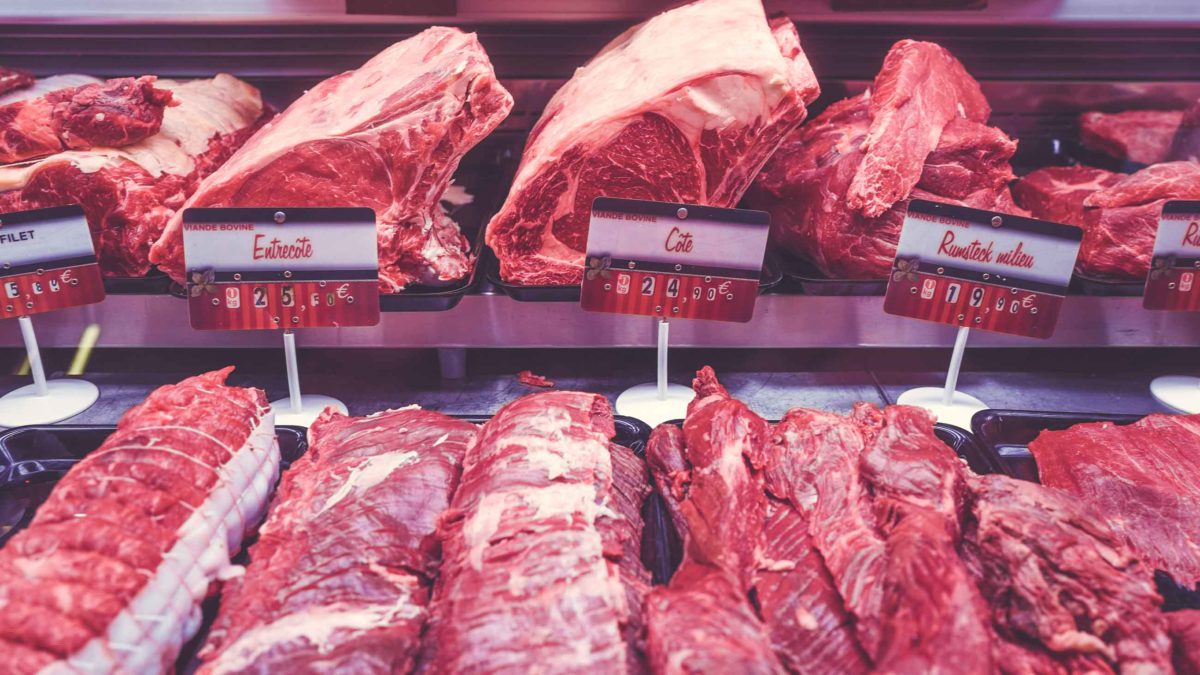Food or Feed? A New Look at the Global Grain Drain
The use of grains such as corn and wheat to feed cattle, chicken, sheep, and other animals destined for human meat consumption has been maligned for decades as wasteful, inefficient, and even unethical. Those grains, after all, could be used to feed hundreds of millions of hungry people, and livestock need to consume large amounts of feed to produce a smaller amount of meat — with anywhere from 7 to 10 kilograms of grain needed per kilogram of meat yield, by some estimates.

It takes a lot of grain to produce a smaller amount of meat — but perhaps not as much grain as once thought.
Visual: Lukas Budimaier/Unsplash
But this feed versus food debate has been skewed, a recent analysis suggests, in part because it was unclear exactly how much the typical livestock diet consists of hay, straw, leaves, stalks, stubble, and other crop residues that humans don’t eat.
For starters, livestock eat a total of 6 billion metric tons of feed annually, the scientists found. They arrived at this figure by running a high-resolution spatial model that simulates livestock production on a new database describing global feed rations for six species — cattle, buffalo, sheep, goats, pigs and chickens — as well as types of land use such as pastures and ranges, and other factors.
That annual feed figure is huge, but the team of researchers led by Anne Mottet, an agronomist with the Food and Agriculture Organization of the United Nations, which funded the study, found that 86 percent of it is not edible by humans. The world’s livestock also require less feed per kilogram of meat yield than previously estimated — in the range of 3 kilograms on average, the analysis suggested.
If follow-up studies bear this out, the findings could guide policymakers aiming to make food systems more efficient as the world’s population is set to reach 9.8 billion by 2050. With that growth, demand for meat is expected to rise. It’s a high-calorie, high-protein food that also provides key nutrients such as iron, Vitamin A and Vitamin B12, which are harder to get from strictly plant-based diet.
Some of the confusion about meat came from a lack of precise information about the diets of the full diversity of the world’s livestock animals, the researchers wrote in the September issue of the journal Global Food Security. And critics typically assume that all meat is produced on intensive farms, such as feedlot cattle, without considering smaller or backyard farms with domesticated pigs or chickens and farms that let animals graze.
It’s clear that more livestock will be raised globally in the coming decades, which certainly will require more feed and vast swaths of additional land for grazing and growing the crops to generate feed. But there is plenty of room for improvement in the efficient use of feed for animals, Mottet says. Combinations of genetic selection, better veterinary care and changes to diets have already significantly increased milk yields from dairy cows and reduced the amount of feed required to raise the yield of meat from chicken, turkeys, and pigs, the authors wrote. Human food waste could also be turned into feed for animals.
Nonetheless, Mottet hints that it would also help the global effort to ensure enough food for all in the future if voracious carnivores cut back on burgers and other meat. “Balanced diets are part of the solution, whether this means more animal products where consumption is too low with regard to nutritional recommendations,” she says, “or less in some parts of the world where people eat too much already.”











Comments are automatically closed one year after article publication. Archived comments are below.
Any pig or cattle farmer could have told you this, plus a little common sense!